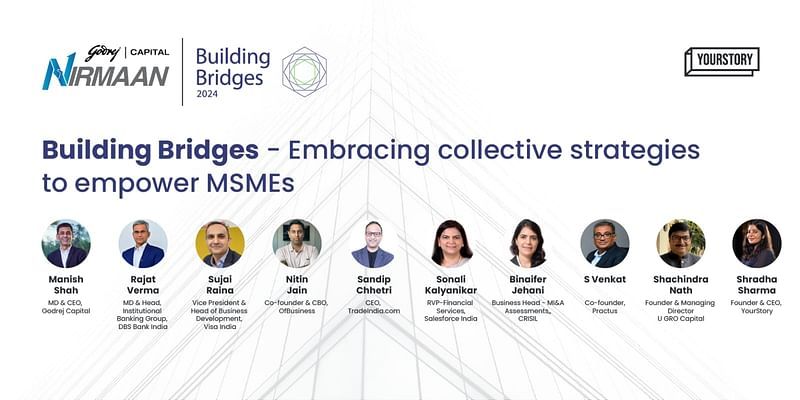Building a secure infrastructure for FinTech innovation in India
The FinTech industry needs to put in place strong security measures to ward off online fraud and offer safe, convenient and risk-free alternatives to customers.
FinTech is no longer just a buzzword. Instead, it is an all-encompassing reality for India’s fast-growing financial technology marketplace. India is currently the world’s third-largest pool for FinTech innovation and among the fastest-growing markets worldwide.
By the end of 2020, FinTech investments are likely to expand to $31 billion, says Amitabh Kant, CEO of Niti Aayog. As technology solutions for financial service institutions proliferate, it is essential to consider how to balance security with innovation.
Indian FinTech trends to know
India is the world’s second-largest hub for FinTech innovation, and it is primed for massive mobile disruption as the only global market with over 1 billion connected devices.
The industry is growing at a fast pace, thanks to the growing population of cashless customers, strong government support for financial infrastructure, and innovation culture.
FinTech innovators have no shortage of opportunity to use mobility for disruption, but it is important to design with cybersecurity in mind. 96% of Indians surveyed by FIS fell prey to financial fraud last year, according to the annual PACE report. Financial technologists need to evolve quickly to stay a step ahead of fraudsters.
The UPI upgrade
UPI transactions will account for 59% of the market share by 2024-2025, according to BCG, up from 17% in fiscal year 2019-2020. Traditional banks must consider infrastructure upgrades to support UPI payments and improve customer-facing interfaces.
Currently, the UPI space is still largely dominated by non-bank FinTech apps, with traditional banks counting for only 10% of all UPI payments in 2019. There is a huge opportunity for brands from outside the banking industry to capture part of this growing market.
P2P payments
The national UPI upgrade has enabled India to launch several platforms for peer-to-peer payments in real time. Amazon Pay was the first to launch a peer payment product using the UPI framework, followed quickly by , , and Google Pay.
Alternative lending
Alternative loans are another rapidly-growing area in India’s FinTech sector. Nearly 50% of connected Indian consumers who looked for financing in the past 12 months picked digital lending products instead of a traditional lender.
Alternative lending has already begun to dramatically expand the number of consumers who qualify for SME, home, vehicle, or personal financing.
Mobile PoS captures cashless market
Currently, around five million Point of Sale (PoS) devices have been deployed in India. The immense potential market for PoS includes the nation’s 80 million MSME sellers. Traditional PoS systems were not a viable option for MSME sellers due to high implementation costs, reliability issues, bulk, and opaque technology.
India’s market is shifting away from longstanding cash-on-delivery payment systems to new digital payments. Lightweight Android-based PoS system deployments for payments and analytics have been a highly successful tool to help merchants keep pace with cashless demand, which grew 55% last year.
Looking to future FinTech trends
India’s payment infrastructure is quickly evolving and becoming cashless; however, it is still vulnerable at the edges. To combat this, banking and finance regulatory bodies such as the RBI are developing their own digital fraud detection frameworks to ward off today’s threats and the next generation of risks in the wake of cryptocurrency, blockchain, and AI innovation.
Combat cashless cyber risks
The majority of traditional PoS devices globally are managed and updated by TMS, who provide direct access to private devices to overseas hardware vendors for updates. Similarly, Android OS is built and signed in China. FinTech innovators should protect mPoS from foreign bloatware and spyware.
Also, Android mPoS do not always receive critical security patches released by Google on a monthly basis, which can lead to longstanding vulnerabilities without regular mPoS updates.
In the future, FinTech legislation may include national security resolutions to use homegrown Android OS which is flashed and signed for mPoS. In the meantime, FinTech innovators should partner with a trusted mPoS provider whose servers are located in India for device management and OS updates.
Prepare for the rise of 5G
The planned rollout of 5G networks across India will contribute to the rise of hyper-connectivity and increased blurring of lines between the financial products offered by both banking and non-banking brands.
5G will also introduce a huge amount of potential for FinTech mobile device innovation, including smartphones, wearables, and IoT devices.
Banking is likely to become an “embedded utility” within many different industries, according to William Genovese of Huawei, to support greater consumer choices about financial products. 5G networks in India are likely several years from reaching maturity, but it is best to prepare for evolving customer expectations and steep competition.
Compete on customer analytics
Customer loyalty and trust is a competitive battlefield, and 5G is likely to raise the stakes. FinTech innovators can win if they use analytics to outperform traditional financial service firms. 5G will offer the processing power to support advanced AI and Big Data use cases, allowing FinTech entrants to improve customer segmentation, behavioural profiling, and personalisation.
In addition, FinTech startups with a refined approach to risk analytics can gain an advantage. FinTech firms have already begun using fraud detection to mitigate customer risks and target qualified customers, including individuals who are shut out by traditional financial service providers.
Secure innovation is essential for FinTech
India’s fast-growing cashless economy is poised for significant FinTech disruption, especially among non-traditional innovators who can offer safer, more convenient, and better alternatives to customers.
Safe growth and transformation in FinTech requires attention to cybersecurity and risk.
While Android is the wisest platform for FinTech devices like mPoS, wearables, and IoT, it carries a unique set of risks like any other technology platform. Safe innovation is key to develop smart, future-ready solutions.
(Disclaimer: The views and opinions expressed in this article are those of the author and do not necessarily reflect the views of YourStory.)













![[Funding alert] SaaS startup Zomentum raises $4.1M from Accel and SAIF Partners in seed round](https://images.yourstory.com/cs/2/b87effd06a6611e9ad333f8a4777438f/Imagekwh8-1594213462859.jpg)